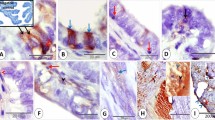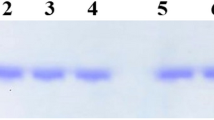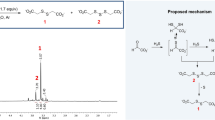Abstract
THE increased activity of pentose-shunt dehydrogenases, which had been demonstrated histochemically in cancers1, has been partly confirmed by biochemical investigations in carcinoma of the cervix in that the cells of the vaginal secretion gave high values for 6-phosphogluconate dehydrogenase2. Since this is said to be an oxidative pathway3, attempts were made to test if a concomitant rise in cytochrome oxidase activity could be demonstrated. This was done histochemically, to avoid dilution of active cancer tissue by inactive or necrotic tissue and by stroma. A more intense and permanent histochemical procedure for cytochrome oxidase4 was applied to sections from eight apparently normal cervices, three apparently normal endometria, ten primary carcinomata of the cervix and seven other carcinomata of the genital tract. The tissues were removed at operation and were frozen and sectioned by a controlled temperature freeze-sectioning method4,5. The cytochrome oxidase-levels were not elevated in the cancers; in some they seemed somewhat depressed.
This is a preview of subscription content, access via your institution
Access options
Subscribe to this journal
Receive 51 print issues and online access
$199.00 per year
only $3.90 per issue
Buy this article
- Purchase on Springer Link
- Instant access to full article PDF
Prices may be subject to local taxes which are calculated during checkout
Similar content being viewed by others
References
Chayen, J., Bitensky, L., Cunningham, G. J., Aves, B. K., Jones, G. R. N., and Silcox, A. A., Nature, 195, 174 (1962).
Bonham, D. G., and Gibbs, D. F., Brit. Med. J., ii, 823 (1962). Bonham, D. G., Triangle, 6, 157 (1964).
Dickens, F., and Glock, G. E., Biochem. J., 50, 81 (1951). Chain, E. B., Brit. Med. J., ii, 707 (1959).
Butcher, R. G., Diengdoh, J. V., and Chayen, J., Quart. J. Micro. Sci., 105, 497 (1964).
Cunningham, G. J., Bitensky, L., Chayen, J., and Silcox, A. A., Ann. Histochim., 7, 443 (1962).
Albaum, H. G., and Eichel, B., Amer. J. Bot., 30, 18 (1943). Goddard, D. R., Amer. J. Bot., 31, 270 (1944). Chayen, J., in Intern. Rev. Cytol., 2, 77 (Academic Press, 1953).
Keilin, D., and Hartree, E. F., Proc. Roy. Soc., B., 127, 167 (1939).
Author information
Authors and Affiliations
Rights and permissions
About this article
Cite this article
BUTCHER, R., CHAYEN, J. & LABRUM, A. Oxidation of L-Ascorbic Acid by Cells of Carcinoma of the Human Cervix. Nature 207, 992–993 (1965). https://doi.org/10.1038/207992a0
Issue Date:
DOI: https://doi.org/10.1038/207992a0
This article is cited by
-
Clinical experience with intravenous administration of ascorbic acid: achievable levels in blood for different states of inflammation and disease in cancer patients
Journal of Translational Medicine (2013)
-
Intravenous ascorbic acid to prevent and treat cancer-associated sepsis?
Journal of Translational Medicine (2011)
Comments
By submitting a comment you agree to abide by our Terms and Community Guidelines. If you find something abusive or that does not comply with our terms or guidelines please flag it as inappropriate.



